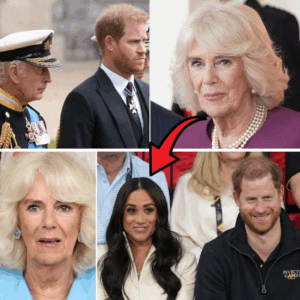In the bustling heart of downtown Chicago, amid the iconic skyscrapers and throngs of tourists, an unexpected drama unfolded on a crisp Sunday afternoon. A bicyclist, weaving through the crowded streets of the Loop, found himself at the center of a high-stakes chase involving heavily armed U.S. Border Patrol agents. The incident, captured on video and quickly going viral, has ignited a firestorm of debate about federal overreach, immigration enforcement, and the militarization of urban spaces far from any international border. The cyclist, who repeatedly shouted that he was “not a U.S. citizen,” managed to evade capture, leaving agents scrambling and the public questioning the presence of border enforcers in the Windy City.
The chase occurred on Dearborn Street, a key artery in Chicago’s central business district known for its mix of office towers, retail shops, and heavy pedestrian traffic. Eyewitness accounts and footage paint a vivid picture of the encounter. Christopher Sweat, a local resident who recorded the event on his smartphone, described the scene as surreal. “It started with verbal comments,” Sweat recounted in interviews with local media. The cyclist, appearing to be a delivery worker based on his backpack and casual attire, approached a group of Border Patrol agents who were patrolling the area. He taunted them, yelling phrases like “I’m not a U.S. citizen” and “come on,” challenging their authority without any apparent physical aggression.
As the tension escalated, the cyclist’s phone slipped from his pocket and clattered to the pavement. One agent, clad in tactical gear including a bulletproof vest and helmet, pointed it out, saying, “You dropped your phone.” In a split-second decision, the bicyclist bent down, snatched the device, and pedaled away furiously. What followed was a chaotic pursuit: half a dozen agents, some carrying rifles, sprinted after him, their boots pounding the sidewalk as onlookers gasped and pulled out their own phones to record. The cyclist, demonstrating remarkable agility, navigated through traffic and pedestrians, ultimately disappearing into the urban labyrinth. Authorities have not confirmed whether he was later apprehended, and no charges have been publicly announced as of this writing.
This incident is not an isolated anomaly but part of a larger federal operation that has transformed Chicago’s downtown into a stage for immigration enforcement. Dubbed “Operation Midway Blitz,” the initiative was launched by the Department of Homeland Security (DHS) on September 8, 2025, under the direction of the Trump administration. Named in honor of Katie Abraham, a victim of crime allegedly committed by an undocumented immigrant, the operation aims to target “criminal illegal aliens” in sanctuary jurisdictions like Illinois. According to DHS statements, the blitz has already resulted in over 500 arrests, focusing on individuals with prior convictions for serious offenses such as gang activity, drug trafficking, and violent crimes.
The presence of Border Patrol agents in Chicago, a city over 1,000 miles from the nearest U.S. border, marks a significant escalation in federal tactics. Traditionally, U.S. Customs and Border Protection (CBP) operates within 100 miles of international boundaries, but legal provisions allow for broader deployments in support of Immigration and Customs Enforcement (ICE). Operation Midway Blitz has brought in agents from sectors like El Centro, California, equipped with military-grade gear including rifles, body armor, and even marine units patrolling the Chicago River. On the day of the chase, dozens of agents were spotted in high-traffic tourist spots: the Wrigley Building, Millennium Park, the Riverwalk, the Gold Coast, and Clark Street in River North. Some were seen marching in formation, their masked faces and armed postures evoking images more commonly associated with border hotspots than urban metropolises.
Chief Patrol Agent Gregory Bovino, who oversees the El Centro Sector and was personally present in Chicago, defended the operation vigorously. In interactions captured on video, Bovino engaged with passersby, assuring one woman who thanked the agents that “we work for you.” He later told reporters that the deployment enjoys overwhelming public support, estimating it at over 80 percent based on interactions with residents. “We’re here to address the violence perpetrated by illegal aliens and gang members,” Bovino stated, emphasizing that agents are trained to respect First and Fourth Amendment rights. However, he warned that any physical attacks on officers would not be tolerated. Bovino’s comments underscore the administration’s narrative that sanctuary policies in cities like Chicago harbor dangerous criminals, necessitating federal intervention.
Yet, the operation has drawn sharp criticism from local leaders and community advocates, who view it as an intimidatory show of force rather than a genuine public safety measure. Illinois Governor JB Pritzker, a Democrat, held a press conference on Monday afternoon to denounce the federal presence. “This is nothing short of militarization,” Pritzker declared, highlighting that Chicago’s crime rates have actually decreased by 13 percent citywide and 14 percent in the 1st District, where the patrols are concentrated. He accused the Trump administration of using the operation to provoke unrest and distract from other policy failures. Pritzker also revealed that up to 100 National Guard troops could be mobilized if the situation escalates, signaling readiness to counter federal actions.
Chicago Mayor Brandon Johnson echoed these sentiments, describing the agents’ deployment as “a provocation that does not make our city safer.” In a statement, Johnson emphasized that his administration is closely monitoring the federal activities and committed to protecting residents’ rights. U.S. Representative Jesús “Chuy” García, whose district includes parts of Chicago, went further, accusing the operation of targeting “hardworking individuals” rather than the “worst of the worst.” García referenced eyewitness reports of agents detaining people based on appearance, including a young man near Catholic Charities. “We will not take this lying down,” García vowed, promising to fight for constitutional rights amid what he called “attacks” from the administration.
Illinois Lieutenant Governor Juliana Stratton also weighed in, criticizing the optics of armed, masked agents patrolling peaceful areas. “This is designed to instill fear in our communities,” she said, particularly among immigrant populations who may avoid seeking help or reporting crimes due to the heightened enforcement. Community organizations like the People’s Patrol in suburban Chicago have ramped up resistance efforts, organizing patrols to monitor ICE activities and provide support to vulnerable residents. Their work highlights a growing grassroots movement against what they perceive as federal overreach.
The bicyclist’s escape has become a symbol in this broader controversy. Social media erupted with clips of the chase, amassing millions of views within hours. On platforms like X (formerly Twitter), users shared the video with captions praising the cyclist’s defiance, such as “F*ck Trump” chants attributed to him in extended footage. One post described the agents as “clowns” huffing and puffing in futile pursuit, while others mocked their inability to catch a man on a bike. The incident has fueled memes and discussions about the absurdity of border agents operating in an inland city, with some comparing it to dystopian fiction.
Eyewitness reactions vary widely, reflecting Chicago’s diverse populace. Meg Evans, a downtown resident, witnessed agents detaining a young man she believed was leaving a charity organization. “It was frightening,” she told reporters, expressing concern for the community’s most vulnerable. Jazmine Bentley, identifying as a woman of color, voiced anxiety about potential profiling: “It makes you nervous that you could be next.” Tourists like Stu from out of town questioned the necessity, noting, “I don’t see any crime here that warrants this.” Conversely, some residents like Harla Hutchinson anticipated more agents, viewing it as a response to ongoing urban challenges.
To understand the roots of Operation Midway Blitz, one must delve into the Trump administration’s immigration agenda. Upon returning to office, President Trump vowed to crack down on sanctuary cities, which limit cooperation with federal immigration authorities. Chicago, with its longstanding sanctuary status, became a prime target. The operation honors Katie Abraham, whose tragic death was linked to an undocumented immigrant, serving as a rallying cry for stricter enforcement. DHS reports indicate that the blitz involves coordinated efforts between ICE, CBP, and local task forces, with marine units on the Chicago River adding a naval dimension to urban policing.
Critics argue that such operations blur the lines between immigration enforcement and general policing, potentially violating constitutional protections. Legal experts point to the Fourth Amendment’s safeguards against unreasonable searches and seizures, questioning whether agents are overstepping by patrolling without specific warrants. The American Civil Liberties Union (ACLU) has condemned the tactics, filing lawsuits in similar cases in Portland and Memphis, where federal agents have also been deployed. In Chicago, the ACLU’s Illinois chapter is monitoring developments, warning that the presence could chill free speech and assembly.
Historically, federal interventions in Chicago are not new. During the 2020 protests, unmarked agents were sent under Operation Legend, drawing similar backlash. That effort, aimed at curbing gun violence, resulted in hundreds of arrests but was criticized for lacking transparency and exacerbating tensions. Operation Midway Blitz appears to build on that model, expanding the scope to immigration while maintaining a militarized approach. Proponents, including Republican lawmakers, praise it as necessary to restore law and order in Democrat-led cities they claim are soft on crime.
The economic impact on Chicago cannot be ignored. Downtown areas, reliant on tourism and commerce, saw disruptions as agents marched through Millennium Park and along Michigan Avenue. Business owners reported uneasy customers, with some opting to avoid the area altogether. The Chicago Loop Alliance, a business advocacy group, expressed concerns about the negative perception, noting that the city’s recovery from the pandemic could be hindered by such spectacles.
Immigrant rights groups have mobilized in response. Organizations like the Illinois Coalition for Immigrant and Refugee Rights (ICIRR) are hosting know-your-rights workshops, advising residents on how to interact with federal agents. Stories from affected communities highlight the human cost: families separated, workers deported, and a pervasive atmosphere of fear. One anonymous immigrant shared, “We came here for a better life, but now we’re looking over our shoulders every day.”
As the operation continues—Bovino has stated it will persist “until the mission is accomplished”—the bicyclist’s daring escape serves as a microcosm of larger resistances. Whether viewed as an act of defiance or recklessness, it underscores the friction between federal mandates and local autonomy. In a city as diverse as Chicago, where immigrants contribute significantly to the economy and culture, such enforcement raises profound questions about identity, belonging, and justice.
Looking ahead, the standoff between state and federal authorities could intensify. With Pritzker’s mention of National Guard deployment, the potential for jurisdictional clashes looms. Meanwhile, the Trump administration shows no signs of backing down, framing the operation as a success in combating crime. For the bicyclist who slipped away, his fate remains unknown, but his moment of evasion has etched itself into the narrative of America’s ongoing immigration battles.
In the end, this incident in downtown Chicago is more than a chase; it’s a flashpoint in the nation’s divided soul. As debates rage on, one thing is clear: the streets of the Windy City, far from any border, have become the new frontier in the fight over who belongs in America.



